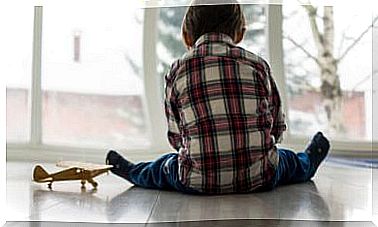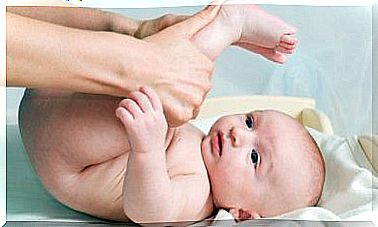How Long Should Babies Nap?

Parents often wonder about the specific time in which babies should stop napping. It is important to remember that this varies from one child to another, as well as depending on the age and the degree of daily activity that the little ones have.
Beyond this, there are certain standards or average ages in which children repeatedly coincide in their normal developmental process. The morning nap and the afternoon nap are part of this type of habit.
Babies generally take 5 to 6 naps a day after the first year of their life. Between 15 and 18 months, they take two short naps; it is very likely that even before they are two years old they no longer want to sleep in the afternoons.
However, the average age to quit is between three and four years old. As we have already pointed out, napping needs are different from one child to another; they also depend on the quantity and quality of nighttime sleep.
Keep in mind that a child needs a total of 12 to 14 hours of sleep daily. When children sleep less than 12 hours, either because they have to go to daycare or because they are already of school age, it is advisable that they take a short nap after the meal. A moment of rest to regain energy is also beneficial.
Multiple benefits of napping in children
What are the benefits that a child will get from napping for a few hours? These are the main ones:
- Improve your memory.
- Optimize your psychological and social performance.
- Stimulates imagination and creativity.
- Improves school performance.
- Calms down and reduces irritability.
- Increase concentration.
- Stimulates growth.

What indicates that babies can stop napping
How do you know when a child is ready to stop napping completely? These behaviors can be clear signs that parents should look for:
- If you have a hard time falling asleep at nap time and generally don’t seem tired. This is the classic sign that the child may be beginning the transition.
- It takes a long time to fall asleep at bedtime.
- He skips the afternoon nap and does not present any side effects : there is no irritability, he does not seem tired and he has no problems sleeping at night; This is an unmistakable sign that you are ready to begin the transition from no afternoon naps.
Tips for managing the transition from napping
As the child grows, he will be able to stay awake longer, since he manages his waking time more easily; young children sometimes have trouble sleeping at night. Parents, by eliminating the afternoon nap, will help them reestablish their nighttime sleep.
It doesn’t have to be complicated to transition from a nap to neither; In this sense, there are no definitive rules about how long babies should nap. This varies from child to child, depending on their age; It will even depend on the level of activity that the child has during the day.
Some young infants may stop napping as early as the first year and will almost never need another afternoon nap; others may transition more gradually. School-age children don’t usually nap; If they have at least 12 continuous hours of sleep, they will be in perfect condition.

The nap habit doesn’t have to be forced
We must not insist that the child take a nap; if he does not want to, even if we notice him sleepy, do not force him to sleep. This, of course, as long as the child does not have irritability and trouble falling asleep at night.
We should only be concerned if the child exhibits any of these signs: he wakes up with a headache, has difficulty getting up in the morning, gives the impression of being tired during the day, or has serious problems concentrating in his daily activity.
It is important to remember that the elimination of the nap habit should be progressive; always taking into consideration the particular needs of children, so that the change does not affect their overall health and well-being.










